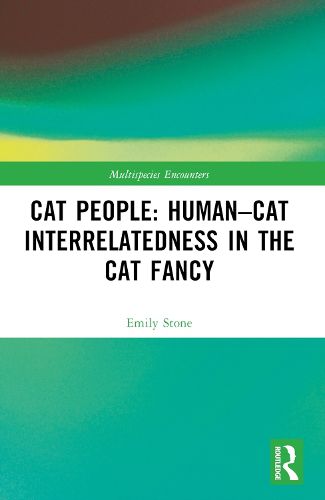Readings Newsletter
Become a Readings Member to make your shopping experience even easier.
Sign in or sign up for free!
You’re not far away from qualifying for FREE standard shipping within Australia
You’ve qualified for FREE standard shipping within Australia
The cart is loading…






This book examines the social world of the cat fancy, or the leisure activity of breeding and exhibiting pedigree cats. Based on multispecies ethnographic fieldwork and interviews in the United Kingdom, it explores the process and performance of exhibiting cats at shows, the breeding practices and discourses integral to the creation of pedigree breeds, and the relations that these practices generate between human guardians, the pedigree cat population, and non-pedigree cats. Through observation with cat fanciers and their interactions with their cats, the author investigates the social dynamics and relationships that form within the fancy, considering the interconnections between biopower and eugenics in pedigree breeding, the practices of pet keeping and the complexities of more-than-human care, and the implications of involvement for the cats themselves. As such, Cat People: Human-Cat Interrelatedness in the Cat Fancy will appeal to scholars from across the social sciences and humanities interested in human-animal interactions, multispecies leisure, anthrozoology, and more-than-human care.
$9.00 standard shipping within Australia
FREE standard shipping within Australia for orders over $100.00
Express & International shipping calculated at checkout
This book examines the social world of the cat fancy, or the leisure activity of breeding and exhibiting pedigree cats. Based on multispecies ethnographic fieldwork and interviews in the United Kingdom, it explores the process and performance of exhibiting cats at shows, the breeding practices and discourses integral to the creation of pedigree breeds, and the relations that these practices generate between human guardians, the pedigree cat population, and non-pedigree cats. Through observation with cat fanciers and their interactions with their cats, the author investigates the social dynamics and relationships that form within the fancy, considering the interconnections between biopower and eugenics in pedigree breeding, the practices of pet keeping and the complexities of more-than-human care, and the implications of involvement for the cats themselves. As such, Cat People: Human-Cat Interrelatedness in the Cat Fancy will appeal to scholars from across the social sciences and humanities interested in human-animal interactions, multispecies leisure, anthrozoology, and more-than-human care.